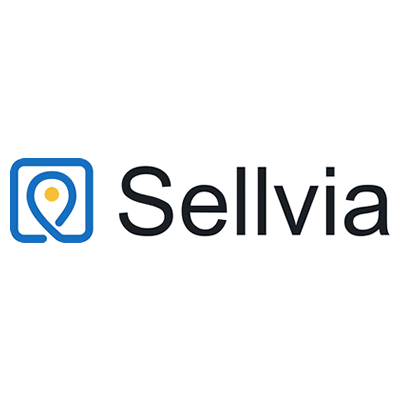New Suggestions For Picking Sellvia Wordpress Dropshipping Services
Wiki Article
How To Assess The Sourcing Of Products, Supplier Integration, And Dropshipping Services Of An Amazon Seller Using Shopify Or Wordpress For Us Markets
You'll need to assess each platform in terms of reliability of suppliers, the speed of integration and suitability for U.S. customers. The following is a breakdown of the features to consider in Amazon Sellers, Shopify or WordPress for your dropshipping needs.
1. Amazon Seller
Fulfilled by Amazon (FBA) vs. Merchant Fulfilled. Amazon's FBA service will allow you to meet your customers' expectations through warehousing and faster delivery. FBA however, requires that you purchase inventory in advance and is not identical to dropshipping as a business model.
Amazon's Dropshipping Policy Dropshipping policies from Amazon require that you identify yourself as the seller in your record. Third-party suppliers need to be reliable with regards to quality and shipping in order to prevent account suspension due to order issues or bad feedback. Be sure to ensure that the suppliers you select comply with Amazon's strict packaging requirements and shipping standards.
Amazon does not have as many integrations with other dropshipping services as Shopify and WordPress. If you're a dropshipper via Amazon it is essential to research and work with Amazon-compatible suppliers who can comply with strict delivery standards or choose private label FBA options to expedite delivery.
Assessment Methods for Amazon Sellers:
Examine Supplier Reliability: Determine whether the provider is able to meet Amazon's speedy shipping requirements (often within 2 to 3 days for Prime customers).
Policy Compliance: Ensure that the suppliers are in compliance with Amazon's packaging and labeling standards and can manage returns and refunds in accordance with Amazon's policies.
Supplier Communication: Reliable and clear communication is essential because you'll need to be responsive to any problems that may arise. If you're making use of FBA, choose suppliers with consistent level of quality and inventory in order to avoid disruptions.
2. Shopify
Shopify offers a variety of integration applications for dropshipping providers, including Oberlo. Spocket. DSers. and Modalyst. This makes it easier to integrate products with suppliers. There are numerous applications that give U.S. based suppliers the possibility of cutting down on shipping costs.
U.S. Based Supplier Access : Tools like Printful and Spocket specialize in procuring items from U.S. vendors or suppliers with U.S. storage facilities. This can cut the time to ship for U.S. customers.
Automated Syncing: Shopify's applications automatically sync product listings inventory, prices, and inventory from suppliers, thus reducing the chance of selling out-of-stock items or pricing errors. Automated fulfilment features can reduce manual tasks, while also keeping order statuses updated.
Variety of Products and Niching Options: Assess whether the integrations provide you with the ability to access products that are in your niche.
The steps to assess Shopify
U.S.-Based Availability of Suppliers Find out which suppliers have U.S. based warehouses, or that offer speedy delivery to the U.S. If you are looking for U.S. sources, Spocket/Printful is the best option.
Review and Quality of Product: Read reviews and samples of products, if you can. The reliability of suppliers can vary widely and feedback from customers about the quality of products can help make sure that the buyer has a pleasant experience.
Supplier Responsiveness & Customer Support Examine the supplier's response time. This is crucial in the event of problems. The reliability of customer support provided by suppliers can lead to speedier resolutions and increased customer satisfaction.
3. WordPress (WooCommerce)
Flexible Sourcing Using Plugins : WooCommerce which is built on WordPress provides a significant flexibility in sourcing products, through plugins such as AliDropship Spocket and WooDropship which can sync your supplier's product directly into your shop.
U.S. Based Supplier Options: WooCommerce, similar to Shopify integrates U.S.based suppliers, like Spocket, Printful and other companies, allowing for rapid delivery of goods within the U.S.
Product Customization and Private Label Options: WooCommerce may also integrate with private label and custom print providers like Printful, which allows for product branding and customization--helpful for establishing a unique brand identity.
Manual Fulfillment Option: Although WooCommerce can automate order fulfillment using many plugins you will be in control of the process, making it much easier to modify and fix issues if needed. This is an important benefit since it requires more management and setup compared to Shopify.
WooCommerce Evaluation Steps
Compatibility & Reviews: Check suppliers' plugins for compatibility as well as reviews. Make sure that your products, inventory and prices are automatically synchronized. This is essential to manage large orders.
Supplier Quality Control: Check the credibility and reputation of potential suppliers. Find suppliers that provide excellent customer service, and consistent quality of their products and availability.
WooCommerce permits product customization and a variety of pricing options. This is a great feature in cases where you need to frequently alter markups on your products based on the market, costs of suppliers or other variables. See the recommended Sellvia reviews for blog tips including trending ecommerce, best online commerce platform, dropshipping site, make a online shop, selling thing online, platform online shop, website business for sale, starting an online store, build an online shop, ecommerce shop and more.

How To Assess The Payment Processing And Security
Dropshipping in the U.S. requires a thorough review of payment processing as well as security of Amazon Sellers, Shopify and WordPress (WooCommerce) because each platform has different options regarding costs as well as compliance and security. Ensuring safe and efficient transactions builds customer trust and mitigates risks, hence here's an outline of how to assess these aspects on each platform.
1. Amazon Seller
Payment Processing
Amazon Pay: Amazon manages all payments for transactions on its marketplace. This ensures the same and seamless experience for the customer. Amazon Pay allows customers to make use of the payment methods they've saved in their Amazon account. This makes it easier to use, and boosts conversion rates.
Disbursement Frequency and Fees: Amazon deposits seller payouts biweekly (14-day interval). Amazon deducts charges (such a referral fee, FBA fees etc.). before disbursing payments. Understanding Amazon's fees structure is crucial, since the fees may differ based on the categories of products to which you're looking at.
Security and compliance:
PCI DSS Compliant: Amazon is a member of the Payment Card Industry Data Security Standards. This ensures that credit card information is stored and processed securely. Sellers do not need to manage PCI compliance directly as Amazon oversees this aspect.
Fraud Prevention Fraud Prevention - Amazon's fraud prevention and detection tools are AI-based that help reduce the risk of purchasing fraudulent items. Amazon also provides the A-to-Z Guarantee, which safeguards customers and indirectly protects sellers from high-risk transactions through providing dispute mediation.
Security of Accounts: Amazon requires multi-factor authentication for seller accounts. This provides an additional layer of protection against unauthorised access.
Amazon Sellers Steps to Assess
Review Amazon's terms for payment disbursement to make sure that your cash flow is in line. Referral fees can accumulate quickly, so be sure to check the fees for your specific category.
Amazon's fraud prevention is an invaluable instrument for both sellers and customers. Make sure that Amazon's safety guidelines are in line with your risk level.
Account Security: Enable multi-factor authentication in your Amazon Sellers account. check the account frequently for unauthorized access.
2. Shopify
Payment Processing
Shopify Payments Shopify Payments provides its own payment gateway that accepts the majority of debit and credit cards, along with digital wallets Apple Pay and Google Pay. Shopify Payments does away with all transaction fees, along with credit card fees.
Third-Party Payment Gateways: Shopify integrates with over 100 payment gateways including copyright, Stripe and Authorize.Net. It's crucial to look at the fee structures of each payment gateway in case you're aiming at the U.S.
Shopify charges transaction fees for using third-party gateways (0.5% to 2%, depending upon the Shopify plans) These add to fees of the gateways. Shopify fees in conjunction with payment provider's fees are the best choice to sell products targeted towards US customers.
Security and Compliance
PCI DSS Shopify's PCI DSS certification is Level 1 meaning that it is in compliance with the industry standards for secure credit card transaction. This certification is applicable to all merchants using Shopify Payments and third-party payment gateways. Sellers are able to avoid PCI Compliance Management.
Fraud Analysis Tools: Shopify provides basic fraud analysis (for instance, identifying high-risk orders) using Shopify Payments, and additional tools are offered through apps like FraudLabs Pro and Signifyd. These tools are made to identify fraud indicators such in IP address mismatches as well as incorrect shipping and billing information.
SSL Encryption Shopify has SSL certificates available for all its plans. They secure transactions by encrypting customer data as well as the server's data.
Assessing Shopify:
Compare the Fees charged by payment gateways: Compare Shopify Payments with third-party gateways. Shopify Payments may offer lower rates for US transactions, but be sure to verify whether hidden fees are applicable.
Assess Fraud Protection Capabilities: Review the fraud analysis offered by Shopify and determine if additional tools or apps are needed for high-risk purchases. Check that the plan for fraud protection aligns with both your dropshipping and customer profile.
Security and Compliance: Confirm Shopify's built-in SSL and PCI compliance; these add credibility and protection for customers, thereby increasing confidence and conversion rates.
3. WordPress (WooCommerce).
Payment Processing
WooCommerce has a flexible range of payment gateways. These are copyright, Stripe Square and Authorize.Net. WooCommerce is compatible with WooCommerce payment gateways (powered by Stripe) that provide a seamless platform experience.
Fees and Customization: Each payment gateway has its own fee structure. WooCommerce does NOT charge additional fees for transactions that go beyond what is imposed by the gateway. You can choose the most affordable gateway to process U.S.-based transactions.
Currency and Tax Handling - Many WooCommerce gateways allow you to handle multiple currencies, and automatically calculate tax. This can simplify dropshipping for international customers.
Security and Compliance:
PCI Compliance Self-hosted means that it's the duty of the store owner or administrator to ensure PCI compliance. Utilizing an online payment processor that is PCI compliant (such such as Stripe and copyright) You can reduce the burden. However, additional security measures are required (SSL or secure hosting).
WooCommerce offers similar plugins to Shopify to aid in the prevention and detection of fraud. These comprise WooCommerce Anti Fraud (WooCommerce Anti Fraud), Signifyd, FraudLabs pro, WooCommerce and WooCommerce. These tools analyze high-risk indicators and then automatically block or flag suspicious orders.
SSL and Security plugins: WooCommerce is reliant on WordPress for security. The security of your website is therefore crucial. It is crucial to get an SSL certificate. The plugins like Wordfence or Sucuri provide additional security layers through firewalls and scanning for malware and other threats, are available.
WooCommerce Evaluation:
Choose a Paying Gateway that is suitable Select the appropriate PCI compliant gateway (such as Stripe and copyright) and look into transaction fees applicable to U.S. based transactions. For dropshipping, choose payment gateways that can manage tax and currency. This will make management easier.
Implement Security measures: Ensure WooCommerce's website is hosted on an encrypted server that uses SSL encryption. Install security plugins, such as Wordfence, and PCI-compliant portals to safeguard your website.
Check out Fraud Prevention Options WooCommerce needs manual setup to ensure fraud prevention. Therefore, evaluate extensions that will be best for your security. You might want to consider using tools that track IP addresses, billing mismatches and other location information. Check out the top rated Sellvia reviews for more tips including e commerce marketing, e commerce marketing, trending product, online companies for sale, best ecommerce platform, best online commerce platform, create an online store, ecommerce business for sale, start a dropshipping business, ecommerce retailer and more.
